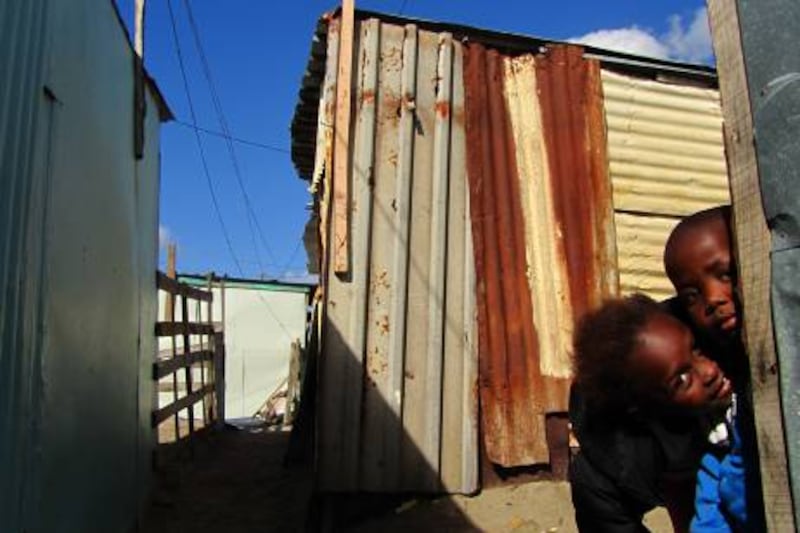So-called "slum tours" are a big thing in the travel business these days. An international conference called Destination Slum held in the UK in December discussed "the production and consumption of poverty in travel and tourism", with presentations carrying an air of academia, including "gangster tourism: representations of 'the ghetto' in the era of global security" and "slum tourism as a search for urban authenticity".
"Authentic" is a troublesome byword in travel promotion. I'm reminded of Andrew Potter's The Authenticity Hoax: How We Get Lost Finding Ourselves, a recent book in which the author shows how westerners, suffering from spurious delusions that our lives are somehow fake or artificial, tie themselves in knots chasing an "authenticity" that doesn't really exist. Entire industries have grown up around this urge. For some, it means shopping at Whole Foods; for others it entails visiting the grottiest parts of the globe.
In Cape Town especially, the "consumption" of poverty, sometimes derided as "poorism", can be quite discomfiting, if only because the city beckons visitors with a life that, while hardly fake, is certainly easy. Think languorous days on the beach, sunsets at posh seaside eateries, tours of Cape vineyards plus relatively safe adventures such as shark cage diving and kitesurfing.
Outside the centre is another face of Cape Town, the sprawl of townships in the Cape Flats, a low-lying area to the east of Table Mountain where the apartheid regime relocated non-whites. Tours of these districts are a touchy subject among travellers anxious not to seem like rich white tourists peering down into shanty towns from the top of a double-decker bus.
I can't remember whether the subject was a South African township tour, a guided visit to Mumbai's Dharavi slum - which I've done, and approved of - or merely a blanket statement about slum tours, but I recall one traveller remarking that he wouldn't do such a thing "for the same reason I wouldn't go on a guided tour of a Rio favela". As though that by itself were an explanation.
I questioned my Cape Town house mate, fellow overland traveller Luke Aldred, about his own reluctance to go on a township tour. He, too, felt it would somehow be far removed from the real thing - that something more real or organic could be done on our own. Needless to say, neither of us did any such thing on our own during over a month in Cape Town.
I finally signed up with Nomvuyos Tours (www.nomvuyos-tours.co.za) for a four-hour tour of Khayelitsha, one of the largest townships in South Africa. I took Luke along. A city unto itself, Khayelitsha has a reported population of just under 500,000 - although our tour guide, Jenny Housdon, pegs the current figure closer to two million. I found myself subject to the same "authenticity" concern when I met Housdon in person for the first time. She charges US$49 (Dh180) per person for a group of four - not cheap, but not highway robbery, either. My first unspoken thought, however, wasn't about the cost, but rather: how could she show us a township? Housdon, it turns out, is white.
Housdon began visiting Khayelitsha regularly in 2003 for the simple reason that all her white friends told her not to. "Even as an adult, whenever I see a sign that says 'wet paint', I go right up and touch it," she says. "I've never outgrown that." She made scores of Xhosa-speaking friends in the township who seem thrilled to have visitors; she takes us to local shops, into a shebeen, or pub, and into people's homes - some of them corrugated iron shacks, others solid structures. I discerned no insensitivity on her part or voyeurism on ours. In fact, the feeling was the exact opposite.
It was, in many ways, simply a day in the life of Housdon, a freelance activist for township social issues who finances her trouble-making by offering tours to people like us. We visit a daycare centre whose proprietress is being harassed by the authorities for making basic improvements to the building. We hear Housdon lament the indifference of city officials who fail to act on simple complaints like a broken street light - until she herself, enlisted by the residents to battle on their behalf, harangues and cajoles and threatens to go to the press until basic services are provided. Even in today's South Africa, the complaint of a white tends to carry more weight than that of a non-white.
Those in my group agreed it was worth the time and money - even Luke, the initial sceptic. "I enjoyed it," he says. "It's impressive how connected she is with the local community. In some ways my preconceptions were prejudiced. I admit that."
Arguably, most people who travel in places of relative poverty are already engaged in a form of "poorism". That would include most western travellers in Africa, and indeed in much of the world. That doesn't mean one shouldn't do it, for wherever one goes, one inevitably finds people living lives that aren't so different from our own. If that sounds so unbearably inauthentic, one might as well stay home.
Scott MacMillan is blogging about his journey on his website, www.wanderingsavage.com. Read all of his past columns at Around Africa.





